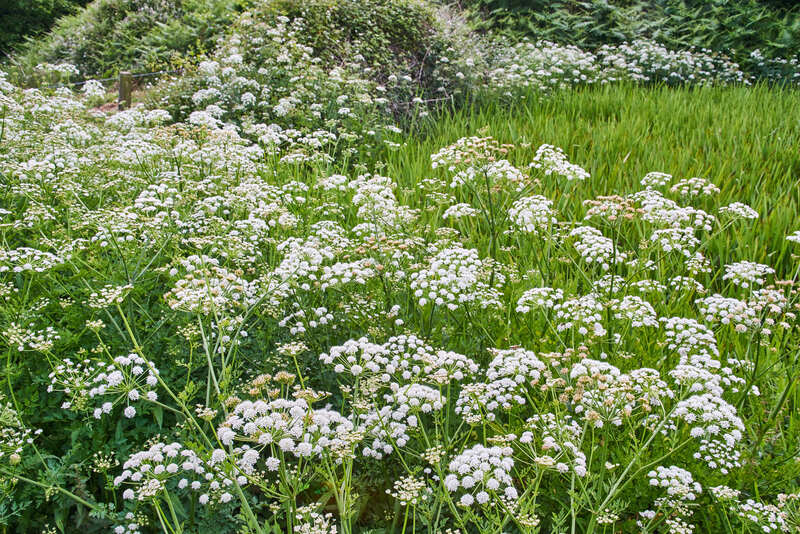The Art and Science of Orchid Growth
Posted on 18/05/2025
The Art and Science of Orchid Growth: An In-Depth Guide
Orchids are more than just exquisite flowers; they represent the perfect blend of nature's artistry and scientific complexity. Cultivating orchids--revered for their beauty and fascination--requires a balance of knowledge, patience, and skill. Whether you're a beginner or a seasoned gardener, understanding the art and science of orchid growth can transform your indoor or outdoor garden into a breathtaking oasis.

Understanding Orchid Diversity and Biology
The World of Orchids: Biological Marvels
With over 25,000 species and more than 100,000 hybrids, orchids form one of the largest plant families on Earth. Their habitats range from dense rainforests and mountain slopes to tropical regions and even colder climates. This diversity is both a testament to their evolutionary success and a challenge for growers seeking optimal orchid growth conditions.
- Epiphytic Orchids: Grow on trees, absorbing moisture and nutrients from the air and debris.
- Terrestrial Orchids: Rooted in the ground, thriving in loamy and organic-rich soil.
- Lithophytic Orchids: Adapted to rocky environments, rooting in crevices and among stones.
Phalaenopsis, Dendrobium, Cattleya and Vanda are among the most popular orchid species found in cultivation.
The Essentials of Orchid Growth: Art Meets Science
Choosing the Right Environment
When it comes to nurturing orchids, environmental control is key. Orchids are highly sensitive to their surroundings:
- Light: Most orchids prefer bright, indirect light. Direct sunlight may scorch their leaves, while low light hinders blooming.
- Temperature: Daytime temperatures between 20-30?C (68-85?F) and cooler nights help mimic their native habitats.
- Humidity: Orchids thrive with humidity levels of 50-80%. This replicates their natural rainforest conditions.
- Airflow: Proper ventilation prevents fungal diseases and keeps roots healthy. Gentle air circulation is essential.
The Artful Approach to Watering Orchids
Watering is as much an art as it is a science in the context of orchid care. Overwatering is a common mistake, as orchid roots require more air than most houseplants.
- Epiphytic orchids should be watered when roots are silvery, not green.
- Use lukewarm water and thoroughly soak the potting medium, letting excess water drain out.
- Nutrient solution: Orchids benefit from weakly-applied diluted fertilizers, especially in the growing season.
Soil, Potting, and Repotting: Science in Action
Orchid roots are unique and require specialized potting mixes for optimal orchid growth:
- Pine bark chips and sphagnum moss provide moisture retention and aeration.
- Charcoal, coconut husk, or perlite help improve drainage and inhibit fungal growth.
- Repot orchids every 1-2 years to prevent root crowding and replenish fresh media.
Tip: Select a pot with drainage holes and use transparent pots for species like Phalaenopsis to monitor root health.
Key Factors That Influence Orchid Growth
Light and Photosynthesis: Powering Orchid Blooms
Lighting determines the quality and frequency of orchid flowering. Understanding your orchid's specific needs (low, medium, or bright light) is vital for healthy growth and prolific blooming.
- Leaf color indicates health: Medium green leaves are ideal; deep green means too little light, while yellowing can indicate excess.
- Supplement with grow lights in low-light areas, but avoid placing bulbs too close to prevent burning.
Feeding Orchids
Orchids need nutrients for lush foliage and abundant flowers. Adopt the "weakly, weekly" feeding rule:
- Dilute balanced orchid fertilizer (20-20-20) to one-quarter strength.
- Apply every other watering during the growing season (spring and summer).
- Flush with plain water monthly to prevent mineral buildup in the potting medium.
Respecting Dormancy and Growth Cycles
Many orchids have dormant periods--a natural rest that stimulates the next growth or flowering phase.
- Reduce watering and feeding during dormancy (usually after flowering).
- Resist the urge to repot unless absolutely necessary during this phase.
The Science Behind Orchid Reproduction and Propagation
Orchid Pollination: Nature's Ingenious Mechanisms
Orchid flowers are marvels of evolutionary engineering, employing sophisticated pollination strategies:
- Some orchids mimic the appearance and scent of female insects to attract male pollinators.
- Sticky, waxy pollen masses (pollinia) adhere to the pollinator, which transfers them to another flower.
Propagation Techniques: Multiplying Your Orchids
While growing orchids from seed is a complex, scientific process requiring sterile conditions, several propagation methods are accessible to enthusiasts:
- Division: Mature plants can be divided into sections, each with at least three healthy pseudobulbs or stems.
- Keikis: Some species, like Dendrobium and Phalaenopsis, produce plantlets ("keikis") that can be potted once roots form.
- Backbulbs: Older, leafless bulbs can occasionally be coaxed into producing new shoots.
These methods allow for the multiplication of prized varieties and ensure genetic diversity within collections.
Common Challenges and Troubleshooting
Pests and Diseases: Prevention and Management
The most common threats to orchid health include:
- Scale, mealybugs, spider mites, and aphids: Combat these with insecticidal soap or neem oil, pruning as necessary.
- Fungal and bacterial infections: Distinguished by soft, discolored spots or wilting. Use sterilized tools and improve airflow to reduce risks.
- Root rot: Caused by overwatering or poor drainage. Remove affected roots and repot in fresh medium.
Why Isn't My Orchid Blooming?
Non-flowering orchids often lack proper light, nutrients, or experience temperature fluctuations that disrupt their cycles. Evaluate and adjust each factor to restore beautiful orchid blossoms.
The Artistic Side: Displaying and Arranging Orchids
Display Techniques to Amplify Orchid Beauty
Orchids are living works of art, and thoughtful placement can highlight their form and color:
- Mount epiphytic species on driftwood or cork for a naturalistic display.
- Group orchids by size and color to create harmonious arrangements.
- Use elegant ceramic or glass pots to complement home or office decor.
Tip: Rotate displays to provide even light and encourage uniform growth.
Advances in Orchid Science: Tissue Culture and Conservation
Micropropagation: Revolutionizing Orchid Propagation
Tissue culture or micropropagation allows for mass production of orchids from a small amount of plant tissue in sterile laboratory conditions. This process makes rare orchids accessible while supporting conservation by reducing wild-harvesting.
Conservation Efforts and the Orchid Trade
Many wild orchids are endangered due to habitat destruction and over-collection. Scientific advances and ethical nurseries help preserve genetic diversity and protect wild populations for future generations of orchid enthusiasts.

Tips for Growing Orchids at Home: Mastering the Art
Beginner's Checklist for Orchid Success
- Choose resilient species such as Phalaenopsis, Dendrobium, or Cymbidium.
- Ensure adequate light and maintain appropriate temperatures.
- Invest in a humidity tray or humidifier for drier climates.
- Regularly check for pests or root issues.
- Learn to recognize normal growth cycles, including dormancy.
Experiment and Enjoy: The Creative Process
Cultivating orchids is a rewarding journey filled with discovery. As you master the fundamental science of orchid growth, recognize that every plant is unique. Let your creativity and observation guide you, celebrating every new leaf and bloom along the way.
Conclusion: Harmonizing Nature and Knowledge
The art and science of orchid growth is a captivating pursuit that combines biological understanding with aesthetic appreciation. By embracing best horticultural practices and experimenting with display, growers fulfill both a botanical and an artistic vision. Orchids reward dedication with dazzling blooms and the enduring satisfaction that comes from a well-tended natural masterpiece. Whether your garden features a single orchid or a thriving collection, remember that each flower reflects the harmony of nature and nurture--a true living work of art.
Let your journey into the world of orchids inspire you to cultivate, conserve, and celebrate these botanical wonders today.

